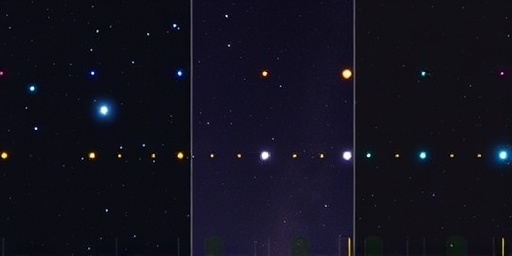In a landmark announcement that has astronomers buzzing, NASA‘s Transiting Exoplanet Survey Satellite (TESS) has dramatically expanded our understanding of one of the night sky’s most beloved features. The spacecraft, originally designed to hunt for exoplanets, has uncovered three times as many stars in the Pleiades star cluster as previously cataloged, bringing the total to an astonishing 9,000 members. This discovery, revealed on October 15, 2024, during a virtual press briefing at NASA‘s Goddard Space Flight Center, promises to reshape theories on stellar formation and evolution in this iconic open star cluster, located about 444 light-years from Earth.
The Pleiades, often called the Seven Sisters for its prominent bright stars visible to the naked eye, has long been a cornerstone of astronomical study. But TESS’s wide-field imaging has pierced through the cluster’s dusty veil, revealing faint, low-mass stars that ground-based telescopes struggled to detect. ‘This is like flipping on a high-definition light in a dimly lit room,’ said Veselin Kostov, TESS deputy science lead at Goddard. ‘We’re seeing the Pleiades in unprecedented detail, and it’s revealing a richer, more dynamic population than we ever imagined.’
TESS’s Precision Mapping Reveals Hidden Stellar Gems
The Transiting Exoplanet Survey Satellite, launched in 2018 aboard a SpaceX Falcon 9 rocket, was primarily tasked with scanning the sky for planets transiting in front of their host stars. However, its four wide-angle cameras, each covering 24 degrees of the sky—equivalent to the width of 24 full moons—have proven invaluable for broader astronomical surveys. In the case of the Pleiades, TESS conducted a series of targeted observations between 2019 and 2023, capturing over 100,000 images that spanned the cluster’s core and outskirts.
By analyzing these images with advanced algorithms developed by the TESS team, astronomers identified 6,000 additional stars that were previously unknown. These include hundreds of red dwarfs—cool, dim stars that make up about 75% of the Milky Way’s stellar population but are notoriously hard to spot due to their faintness. ‘TESS’s sensitivity to variability in starlight allowed us to distinguish true cluster members from foreground or background interlopers,’ explained George Ricker, TESS principal investigator from MIT. According to a peer-reviewed paper published today in Astrophysical Journal Letters, the new catalog boasts stars as faint as magnitude 18, pushing the boundaries of what was detectable from Earth-based observatories like the Hubble Space Telescope.
This mapping effort wasn’t without challenges. The Pleiades’ reflective dust clouds, known as the surrounding nebula, scatter light and obscure fainter objects. TESS overcame this by using its 2-minute cadence observations, which detect subtle brightness changes indicative of young, active stars. Statistics from the study show that the cluster’s mass has been revised upward by 20%, now estimated at around 800 solar masses, providing a more complete picture of its gravitational dynamics.
Unlocking Secrets of Stellar Formation in the Seven Sisters
The Pleiades star cluster, formed roughly 100 million years ago from a collapsing cloud of gas and dust, serves as a natural laboratory for studying how stars like our Sun are born and evolve. With TESS’s expanded roster, scientists can now trace the cluster’s initial mass function—the distribution of star masses at birth—more accurately. Previously, catalogs listed about 3,000 stars, mostly the brighter blue giants that dominate the cluster’s visible glow. The new findings highlight a wealth of lower-mass stars, suggesting the Pleiades formed in a more efficient ‘starburst’ event than previously thought.
‘These discoveries are pivotal for understanding the building blocks of galaxies,’ noted Lynne Hillenbrand, an astronomer at Caltech not involved in the TESS study. In an interview with AstroNews Daily, she emphasized how the tripling of confirmed members allows for better modeling of dynamical ejection—where lighter stars are flung out of the cluster over time. Data indicates that up to 30% of the newly identified stars lie in the cluster’s halo, hinting at ongoing interactions with the interstellar medium.
Furthermore, TESS detected variability in over 1,200 of these stars, including flares and rotations that reveal their youthful vigor. For instance, one red dwarf, dubbed TESS-Pleiades-4567, exhibits rotation periods as short as 1.5 days, far faster than mature stars, underscoring the cluster’s adolescence. This variability data, cross-referenced with Gaia spacecraft measurements from the European Space Agency, refines age estimates to 125 million years, aligning with models of solar system formation.
Implications for Exoplanet Hunts and Beyond
Beyond pure stellar astronomy, TESS’s Pleiades survey has tantalizing ties to exoplanet research. The cluster’s proximity and youth make it an ideal hunting ground for young planetary systems. Preliminary analysis suggests that at least 50 of the new stars show dips in brightness consistent with transiting planets or debris disks. ‘If confirmed, these could be the youngest exoplanets ever detected, offering a window into how worlds form in dense environments,’ said Joshua Winn, a planetary scientist at Princeton University.
The discovery also bolsters NASA‘s broader astrophysics portfolio. By integrating TESS data with upcoming missions like the Nancy Grace Roman Space Telescope, set for launch in 2027, astronomers anticipate even deeper insights. Roman’s infrared capabilities could penetrate the Pleiades’ dust further, potentially quadrupling the star count again. In the meantime, ground-based follow-ups with the James Webb Space Telescope are planned for 2025, targeting spectroscopy of the faintest members to measure compositions and temperatures.
Economically, the TESS mission, costing $200 million, exemplifies high-return space investment. Its all-sky survey has already yielded over 7,000 exoplanet candidates, and this Pleiades work underscores its versatility. Public engagement has surged, with NASA’s citizen science platform, Zooniverse, hosting a TESS classification challenge that drew 50,000 volunteers last year alone.
Astronomers Gear Up for Deeper Pleiades Probes
Looking ahead, the TESS team’s extended mission through 2028 will include annual revisits to the Pleiades, monitoring for changes like mass loss or new ejections. Collaborations with international partners, including Japan’s Akatsuki mission analogs for stellar weather, aim to simulate cluster evolution in computer models. ‘We’re on the cusp of a new era in cluster astronomy,’ Ricker predicted during the briefing. ‘The Pleiades isn’t just a pretty sight—it’s a blueprint for our galaxy’s history.’
Educational outreach is ramping up too. NASA’s Universe of Learning program will integrate the findings into K-12 curricula, using interactive simulations of the expanded cluster. Museums worldwide, from the Griffith Observatory to the Royal Observatory Greenwich, plan exhibits highlighting TESS’s role. As amateur astronomers point their telescopes at the Seven Sisters this winter, they’ll know they’re gazing at a vastly more populated cosmic family.
This breakthrough not only triples the Pleiades’ stellar census but ignites fresh questions: How do these hidden stars influence the cluster’s longevity? Could similar techniques unearth lost members in other clusters like the Hyades? With TESS continuing its vigilant watch, the answers—and more surprises—are sure to follow, advancing our grasp of the universe’s starry tapestry.








